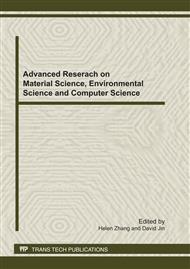p.185
p.189
p.195
p.201
p.205
p.209
p.213
p.219
p.224
CO Emission Characteristics in a Designed Premixed Burner
Abstract:
Carbon monoxide (CO) formed in gas instantaneous water heater combustion systems is a significant pollutant source in the domestic environment. With the advance of reaction science and computer performance, mathematical modeling is working for comprehensive simulation of CO formation to provide a valuable tool to study the insight and understanding of the CO reaction of combustion systems. In this approach, the chemical reactions of combustion are described by nine species and six steps. Numerical results show that the predicted CO level is less than 0.1% when diameter of round fire hole is 0.6 or 0.7mm and the excess air ratio is 1.3. The vortex appearing between two bunch of round fire holes results in a thermal agglomeration and O2 decrease. At this place, CO2 is decomposed into CO and O and CO and the reaction is mainly controlled by CO2 pyrolysis. At this time, the increase of excess air is helpful to reduce CO production. Our results indicate the excess air ratio should be kept above 1.3 to meet with the fifth class of NO emission in gas instantaneous water heater standard GB 6932-2001.
Info:
Periodical:
Pages:
205-208
Citation:
Online since:
August 2011
Authors:
Keywords:
Price:
Сopyright:
© 2011 Trans Tech Publications Ltd. All Rights Reserved
Share:
Citation:


